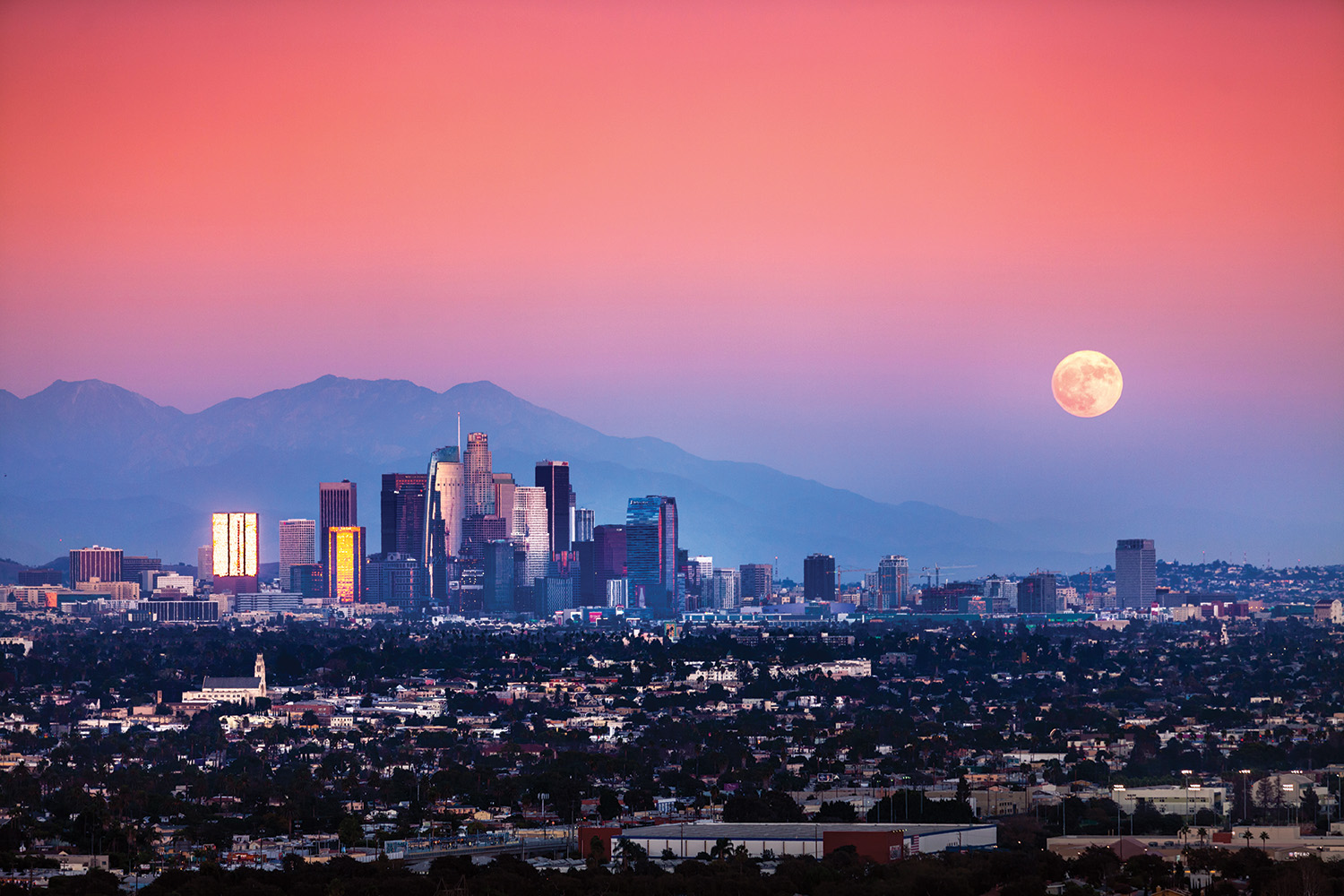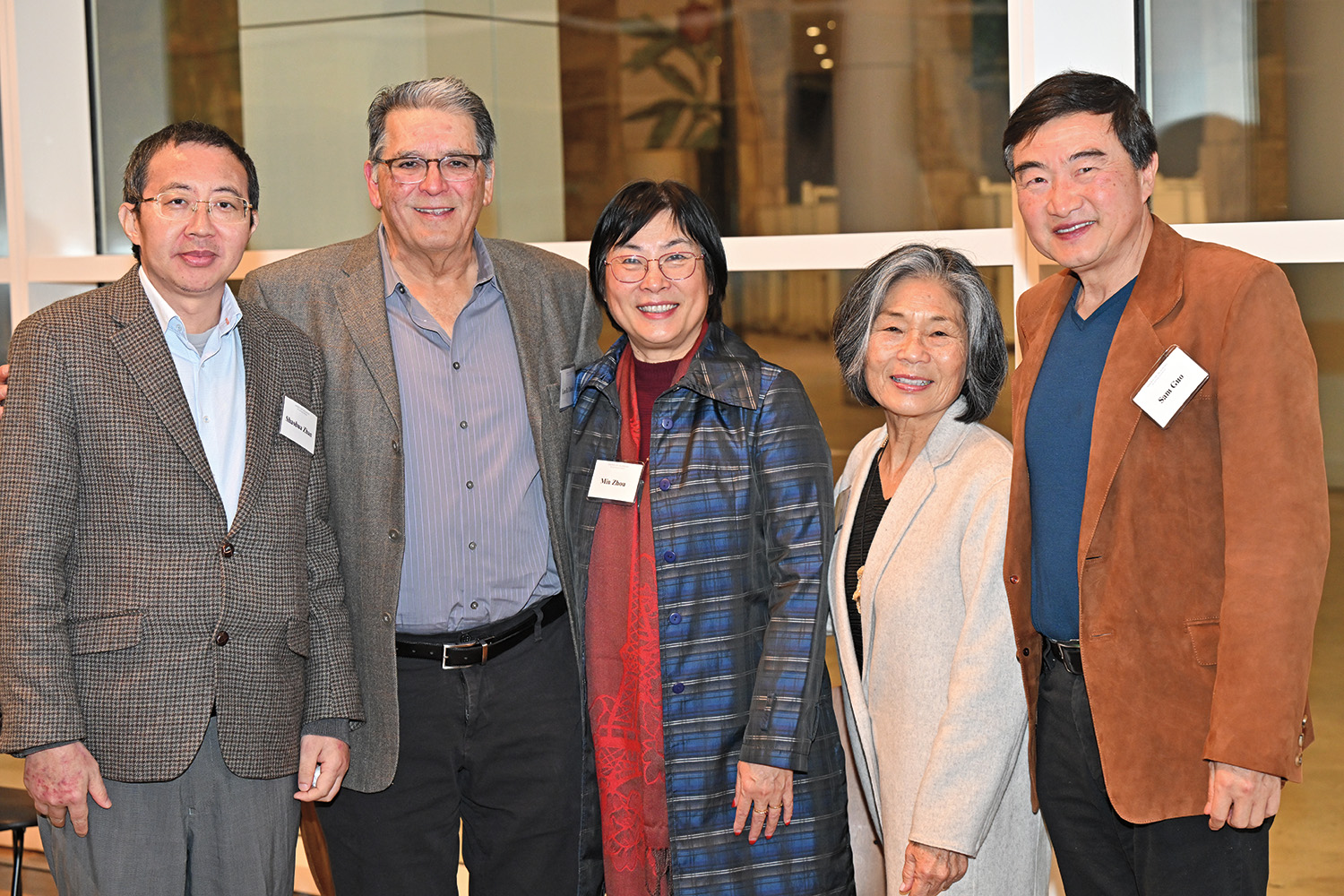By Maysan Haydar, Carl & Lily Pforzheimer Foundation Fellow at the Academy
Los Angeles is globally renowned for its cultural institutions and communities, and attracts some of the world’s most creative and artistic talent. While the film industry and Hollywood tend to draw the most attention, numerous other institutions in the region have made significant investments in places and projects that support and promote cultural production in the city. On March 3, 2024, the Academy’s Los Angeles Program Committee hosted a gathering at The Getty Center with local members to discuss the evolution of this larger cultural infrastructure. It was the Academy’s 2121st Stated Meeting and a Morton L. Mandel Conversation.
The evening featured Katherine Fleming (President and Chief Executive Officer of The J. Paul Getty Trust), Michael Govan (Chief Executive Officer and Wallis Annenberg Director of the Los Angeles County Museum of Art), and Sandra Jackson-Dumont (Director and Chief Executive Officer of the still developing Lucas Museum of Narrative Art) in conversation with Academy President David W. Oxtoby about their museums’ growth, their collaborations with other institutions, and their commitments to their neighborhoods. Throughout the discussion, the speakers imagined the future cultural landscape of Los Angeles, given the city’s continued expansion and global importance ahead of the 2028 Olympics.
President Oxtoby began the discussion by asking the panelists to describe how their museums fit into Los Angeles’s cultural landscape. Michael Govan set the template for the evening’s conversation by highlighting the influence of the city’s people, communities, and education centers in their cultural institutions’ growth. The panelists agreed that the institutional growth in the city was relatively recent, and in some ways lagged behind a naissance of arts in the 1990s. Given the rare, near-unanimous positive opinion Americans hold of libraries, museums, and other cultural institutions, they described the great care and attention required to remain a place for the entire community.
The panelists credited Los Angeles’s reputation for community and engagement for attracting other kinds of creatives, besides those already associated with established institutions, and pointed to public enthusiasm for new galleries, new capital projects, and major new efforts, such as The Hammer Museum’s “Made in LA” biennial. And they also described their efforts to serve and support their city and their communities. Jackson-Dumont spoke about her commitment to the South Los Angeles neighborhood surrounding the new Lucas Museum, and of the museum’s commitment to its schools and to the community’s character, observing that she encourages all new staff members at the museum to walk the neighborhood.
During the Q&A portion of the event, the audience and panelists discussed whether museums and cultural institutions could ever truly be politically neutral, even if they avoid making statements on current events. The panelists described the challenges involved in maintaining their commitment to serve every member of the community, while balancing that against the need to make decisions every day about what will be collected and what will be displayed to the public. They generally agreed that those decisions have political implications, and as museum leaders they constantly need to walk a very fine line.
One member of the audience asked about the potential impact of AI on arts and culture, fearing an impending “assault” by artificial intelligence on culture and the arts. The panelists noted that AI relies on already-existing art and creative works, and that the question was not new, as the influences of computers and coding on art were already present in the 1980s. They pointed to existing artists who have been making interesting uses of AI because the derivative aspects were inspirational of its source materials and in how the human hand reworks it. Another audience member encouraged the Academy to hold a follow-up meeting devoted specifically to these issues, citing the need for a larger discussion about AI by the community.
Following the conversation, Los Angeles Program Committee member Louise Bryson offered a tribute to David Oxtoby for his extraordinary presidency of the Academy. Bryson described the evening’s synthesis of arts, culture, and science as symbolic of Oxtoby’s dedication to the Academy’s broad range of interests, thanked him for his “forward-looking leadership,” and observed that the evening’s event was a fitting tribute to Oxtoby’s affection for both art and science.
After the program, members gathered for a reception under the Mercedes Dorame exhibit, “Woshaa’axre Yaang’aro (Looking Back).” Dorame’s sculptures of abalone—an endangered mollusk and important cultural resource for coastal California Native peoples—are inspired by her Tongva heritage, and will be on display in The Getty’s Entrance Hall through July 28, 2024.
In the coming year, the Humanities, Arts, and Culture program area at the American Academy will be exploring the current state of cultural spaces and their evolving relationships with the publics that create and sustain them. Katherine Fleming set an excellent framing for this new Academy endeavor: “An institution is made up of the people who have conjured it into existence.”


